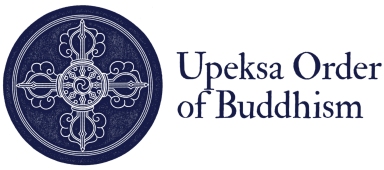
The lineage of our teachings
Bodhidharma, a pivotal figure in this lineage, arrived in China during the Southern and Northern Dynasties, introducing a "special transmission outside scriptures." Despite scant historical records, his teachings became foundational for Chan Buddhism, which we now call a branch of 'Zen'.
However Upeksa way is a blend of Zen and Tantric Buddhism, which developed many of the GongFu and ChaDao ways we use in our contempoary teachings.
The transmission of Bodhidarma's teachings in India, China and Tibet, through to the modern world.
This is the story of our teachings
The transmission of Bodhidharma's teachings through China and Tibet represents a rich tapestry of cultural exchange and religious synthesis. Rooted in the Mahāyāna sūtras, particularly the Laṅkāvatāra Sūtra, Chan Buddhism emerged as a prominent school, initially known as the "Laṅkāvatāra school."
Bodhidharma's succession by Dazu Huike marked the formal establishment of Chan in China, symbolised by the transmission of a robe, a tea bowl, and a copy of the Laṅkāvatāra Sūtra.
Under the leadership of subsequent patriarchs like Daoxin and Hongren, Chan evolved into a distinct school with unique practices, emphasising direct realisation of Buddha-nature. The East Mountain Teachings, characterised by the cultivation of mind without wavering, signified a departure from earlier ascetic practices and a shift towards accessible meditation methods.
The Southern School, epitomised by the legendary figure of Huineng, emphasised sudden enlightenment, challenging the prevailing notion of gradual attainment. Although historical accuracy surrounding Huineng's life is debated, his legacy as the Sixth Patriarch profoundly influenced the development of Chan Buddhism. The distinction between Northern and Southern schools, accentuated by figures like Shenhui, eventually gave way to a unified doctrine centred on "sudden enlightenment," as depicted in texts like the Platform Sutra.
The integration of Chan Buddhism into Tibetan culture marked a new chapter in its transmission, characterised by syncretism and adaptation. Despite initial disputes between Chinese and Indian Buddhists, Chan texts found a home in Tibetan caves, fostering religious dialogue and hybrid practices. However, by the 10th century, Tibetan Buddhism had largely eclipsed Chan influence, emphasising doctrinal distinctions and categorisations.
In the modern world, the teachings of Bodhidharma continue to resonate, transcending cultural and geographical boundaries. The introduction of Buddhism in Tibet during the Tibetan Empire laid the foundation for a distinct Tibetan Buddhist tradition, incorporating elements of Chan but ultimately diverging in its emphasis and practices. Today, Chan Buddhism's legacy lives on through various lineages and schools, reflecting its enduring relevance in an ever-changing world.In conclusion, the transmission of Bodhidharma's teachings through China and Tibet, alongside its integration with Tibetan tantric Buddhism, exemplifies the dynamic interplay of religious thought and cultural exchange. As these traditions continue to evolve and adapt, they offer valuable insights into the human quest for enlightenment and spiritual fulfilment.
Amidst the rich history of Tibetan Buddhism, the emergence of the "secret blue robed messengers" added a unique dimension to the spiritual landscape. As the fifth school of Tibetan Buddhism, this order distinguished itself not only by its distinctive blue robes but also by its mission of maintaining peace and fostering inter-faith dialogue. Clad in their symbolic attire, the blue-robed messengers traversed vast terrains, serving as ambassadors of harmony and understanding in a region often marked by political upheaval and religious diversity. They became the ‘fixed points’, the ‘Equimanity of being’ -The Upeksa.
Central to the ethos of this order was the practice of ChaDao, the Way of Tea, which transcended conventional boundaries to promote unity and mutual respect. Rooted in the principles of harmony, peace, and truthfulness, ChaDao offered a tangible expression of the spiritual ideals espoused by Tibetan Buddhism. Through the ritualised preparation and consumption of tea, practitioners cultivated mindfulness, fostering a deep connection with themselves and the world around them.Protected by the benevolent patronage of figures like the third Dalai Lama, this order flourished as a beacon of tranquility in the face of conflict and suffering.
Embracing the teachings of Bodhidharma and the spirit of Chan Buddhism, its members exemplified the virtues of compassion, wisdom, and equanimity. By embodying these principles in their daily lives, they served as catalysts for positive change, inspiring others to embrace a path of peace and enlightenment.
Despite the passage of time and shifting geopolitical landscapes, the legacy of the blue-robed messengers endures as a testament to the enduring power of spiritual wisdom and altruistic action. In an era marked by strife and discord, their example serves as a reminder of the transformative potential inherent in the human spirit.
As custodians of a tradition rooted in compassion and understanding, we continue to illuminate the path towards a more harmonious and compassionate world.
We need your consent to load the translations
We use a third-party service to translate the website content that may collect data about your activity. Please review the details and accept the service to view the translations.

